Student teamwork
By Mary Bigelow
Posted on 2014-12-23
 I like to consider my classroom as a partnership with the students. So this year (my first year), the students were able to choose their own teams for cooperative learning and lab activities. This worked out in some cases, but there are teams that don’t seem to get much accomplished. They’re often off-task and unfocused. Should I switch to assigning students to teams? —C., Illinois
I like to consider my classroom as a partnership with the students. So this year (my first year), the students were able to choose their own teams for cooperative learning and lab activities. This worked out in some cases, but there are teams that don’t seem to get much accomplished. They’re often off-task and unfocused. Should I switch to assigning students to teams? —C., Illinois
Your goal of establishing partnerships with the students is a good one. But as the adult responsible for safety, curriculum, and providing an appropriate learning environment, you are the majority partner. (Actually, in terms of safety, you should be a benevolent dictator!)
Questions about cooperative learning groups appear frequently in NSTA e-mail lists and discussion forums. Questions about group composition and interaction of student personalities frequently arise. Most teachers would agree there is no single “best” way to set up groups.
- You could use random assignment. As the students work in these groups, you can observe how combinations of personalities work: who are the leaders, the slackers, the thinkers, the doers, the organizers, and the creators; which students need closer supervision; which combinations of students’ personalities clash, and which students struggle with the activities.
- I personally hesitated to use student-selected groups. Usually, friends wanted to work with friends socially, and I was concerned about the students who were selected last or not at all (remembering my own experiences as a non-athlete at recess). I was also concerned students wouldn’t learn how to work with a variety of people. But recognizing the need for students to have a voice in the classroom, I tried a variation in which students could give me a note with the name of one person they would like to work with, without consulting each other. I then structured the groups to try to accommodate their choices, with no guarantees. I had input, too, based on my observations.
- Some teachers suggest grouping students by ability. I’m not sure how to determine science “ability”—I suspect teachers use factors such as reading or math test scores, grades, work habits, or behavior. I found that heterogeneous grouping worked best for my classes most of the time. Once I did put four slackers together. After a while they realized that they did not have much accomplished, and no one was going to bail them out! And sometimes if I had multiple students intensely interested in one topic, I would have them work together.
- There are other student variables to consider. Depending on your students, you many find single-gender groups provide more opportunities for student participation. If your class includes special education students, check with their teachers to determine their needs in terms of their Individual Education Plans.
Perhaps the issue is not the structure of the groups but whether students know how to work cooperatively.
Setting roles is a key component of cooperative learning so the students share responsibility for learning. The roles may vary from task to task: group leader, presenter, data recorder, measurer, equipment manager, liaison (to ask questions of the teacher or other teams), artist, online researcher, questioner, timekeeper, notetaker. Have job descriptions for each role (as checklists or on the bulletin board), and ask students to describe how they and their teammates did their jobs (this could be a exit activity). Rotate the roles so that students have a variety of experiences. Be sure each student understands his or her role.
To keep the groups focused and on-task, students should understand the expectations for the project or investigation. Share the rubric ahead of time. Monitor the groups as they work and provide feedback, and eavesdrop on their discussions and observe their interactions (this can be a formative assessment.
You may have students who struggle with interpersonal skills. Start with brief and highly structured activities. Model what cooperative behavior “looks like,” and work with them on what types of language is appropriate in their groups. Remember, there are times when cooperative learning is effective, times when large group instruction is appropriate, and times when you want students working independently.
So if your current strategy is not facilitating student learning, you should change it and discuss your reasons with the students. This is a great opportunity for action research as you try different configurations or guidelines and note which ones seem to work better for your students.
Photo: http://www.flickr.com/photos/xevivarela/4610711363/sizes/o/in/photostream/
 I like to consider my classroom as a partnership with the students. So this year (my first year), the students were able to choose their own teams for cooperative learning and lab activities. This worked out in some cases, but there are teams that don’t seem to get much accomplished. They’re often off-task and unfocused. Should I switch to assigning students to teams? —C., Illinois
I like to consider my classroom as a partnership with the students. So this year (my first year), the students were able to choose their own teams for cooperative learning and lab activities. This worked out in some cases, but there are teams that don’t seem to get much accomplished. They’re often off-task and unfocused. Should I switch to assigning students to teams? —C., Illinois
"Extras" for NSTA journals
By Mary Bigelow
Posted on 2014-12-21
Students are naturally inquisitive and eager to learn. The NSTA K-12 journals for December have many ideas and suggestions for teachers to tap into these inquiring minds.
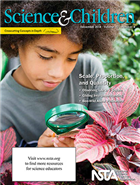 Science & Children: Scale, Proportion, and Quantity
Science & Children: Scale, Proportion, and Quantity
” Young children work at macroscopic scales that are directly observable and move on to those that are too small, too large, too fast, or too slow to observe as they learn.” This issue continues a series that addresses each of the crosscutting concepts with “snapshots” of activities that include the concepts. Here are some additional SciLinks that provide content information and suggestions for additional activities and investigations related to this month’s featured articles:
- Formative Assessment Probe–Watermelon and Grape: An Intuitive Rule of Quantity and Proportion [Density, Buoyancy]
- The Early Years–The Building Blocks of Measurement [How Can Matter Be Measured and Compared?]
- Teaching Through Trade Books—Bigger Than a Breadbox? [How Can Matter Be Measured?, Describing Matter]
- Observing Life in a Square [Habitats; Populations, Communities, and Ecosystems]
- Gliding Into Understanding [Forces of Flight]
- Shrieks and Shrills [Sound]
- Bee-Wild About Pollination [Honey Bees, Pollination]
- Cinderella Separates a Mixture [Physical Properties of Matter, Mixture of Substances]
Both Science Scope and The Science Teacher feature engineering as a theme. Two other organizations have excellent resources for engineering projects and lessons: TeachEngineering and TryEngineering. Both of these have ideas for lessons that focus on authentic problem-solving. Here are some additional SciLinks that provide content information and suggestions for additional activities and investigations related to this month’s featured articles:
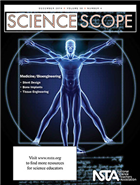 Science Scope: Medicine/Bioengineering
Science Scope: Medicine/Bioengineering
“In this issue, we explore health-related topics that are sure to engage students and reinforce the notion that the body is a system of multiple interacting subsystems.”
The sites described in SciLink’s Biomedical Engineering include lessons and investigations, as well as career information and descriptions.
- No Ordinary Coronary [Circulatory System]
- If it’s engineered, is it wood? [Raw Materials]
- Sickle Cell Disease [Sickle Cell Anemia, Inherited Diseases, Red Blood Cells]
- The Big Break [Biomedical Engineering]
- Inspired by Real Science [Cancer]
- Building bridges with the NGSS [Science of Bridges, Bridge Structures]
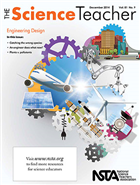 The Science Teacher: Engineering Design
The Science Teacher: Engineering Design
Here are some additional SciLinks that provide content information and suggestions for additional activities and investigations related to this month’s featured articles:
- Catching the Wrong Species [Ocean Fisheries, Overfishing]
- Engineering Design Challenge [Voltaic Cell, Electrochemical Cells]
- Career of the Month: An Interview with a Biomedical Engineer [Biomedical Engineering]
- An Engineer Does What Now? and Make Room for Engineering [Engineer]
- Plants v. Pollutants [Polluted Ecosystems]
One of the benefits of being an NSTA member is having access to all of the journals online. Regardless of the grade level you teach, the journals have ideas for authentic activities and investigations that can be used, adapted, or extended for different levels of student interest and experience.
Students are naturally inquisitive and eager to learn. The NSTA K-12 journals for December have many ideas and suggestions for teachers to tap into these inquiring minds.
Must read—take S&C home over winter break
By Peggy Ashbrook
Posted on 2014-12-14
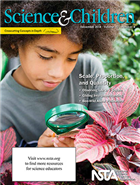 The December issue of Science and Children will be an issue I refer to often. Consider making it the one resource you take home with you if you have a winter break from teaching so you can have time to read and reflect on how the authors’ experiences and lesson plans might work in your classroom.
The December issue of Science and Children will be an issue I refer to often. Consider making it the one resource you take home with you if you have a winter break from teaching so you can have time to read and reflect on how the authors’ experiences and lesson plans might work in your classroom.
Here are just some of the reasons why this issue is such a useful resource for early childhood educators:
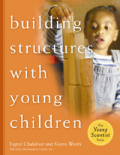 Programs in cold weather areas may find themselves indoors more in the winter, with children spending a lot more time building with blocks. Learn about the resource book, Building Structures with Young Children, by Ingrid Chalufour and Karen Worth, in the Early Childhood Resources Review column, reviewed by Beth Van Meeteren.
Programs in cold weather areas may find themselves indoors more in the winter, with children spending a lot more time building with blocks. Learn about the resource book, Building Structures with Young Children, by Ingrid Chalufour and Karen Worth, in the Early Childhood Resources Review column, reviewed by Beth Van Meeteren.
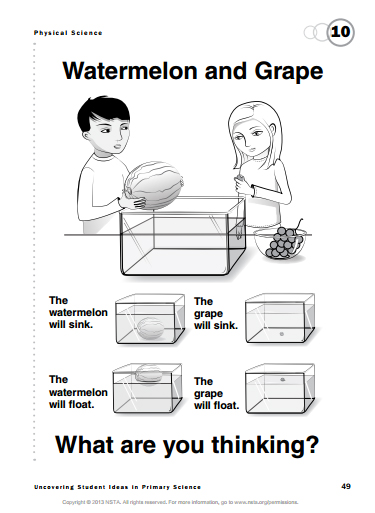 What are important reasons for doing sink and float activities with young children? Page Keeley’s formative assessment probe column, Watermelon and Grape: An Intuitive Rule of Quantity and Proportion, shows us how to help children move past the “More A-More B” intuitive rule, while having fun and exploring the properties of water. This column generously shares probes from Keeley’s books.
What are important reasons for doing sink and float activities with young children? Page Keeley’s formative assessment probe column, Watermelon and Grape: An Intuitive Rule of Quantity and Proportion, shows us how to help children move past the “More A-More B” intuitive rule, while having fun and exploring the properties of water. This column generously shares probes from Keeley’s books.
 Doing fieldwork in “your own backyard” with elementary students can bridge areas of knowledge, helping students see how core ideas extend beyond the boundaries of a single science discipline. The article, Observing Life in a Square, by Meredith Park Rogers and Melonie Steele, emphasizes how time—8 weeks, 3 days a week for 45 minutes—is an essential part of learning to work like scientists. Designed for grade 2, but the authors offer ways to use it in grades K, 3 and 5.
Doing fieldwork in “your own backyard” with elementary students can bridge areas of knowledge, helping students see how core ideas extend beyond the boundaries of a single science discipline. The article, Observing Life in a Square, by Meredith Park Rogers and Melonie Steele, emphasizes how time—8 weeks, 3 days a week for 45 minutes—is an essential part of learning to work like scientists. Designed for grade 2, but the authors offer ways to use it in grades K, 3 and 5.
 Pre-service and in-service teachers will find “Shrieks and Shrills: Exploring sound with preschoolers” by Mandy McCormick Smith and Kathy Cabe Trundle a complete guide to implementing an exploration, or study, of sound. The authors note that after beginning with children’s interests, the “skill of asking children productive questions is an important next step in moving from incidental to intentional learning, with focused and planned exploration.” Later they encourage exploration of student-devised questions. The authors state that explorations that provide a well-rounded authentic learning experience do not happen in a once a week science time but are part of a lengthy unit, and they provide the information so we can explore with our students.
Pre-service and in-service teachers will find “Shrieks and Shrills: Exploring sound with preschoolers” by Mandy McCormick Smith and Kathy Cabe Trundle a complete guide to implementing an exploration, or study, of sound. The authors note that after beginning with children’s interests, the “skill of asking children productive questions is an important next step in moving from incidental to intentional learning, with focused and planned exploration.” Later they encourage exploration of student-devised questions. The authors state that explorations that provide a well-rounded authentic learning experience do not happen in a once a week science time but are part of a lengthy unit, and they provide the information so we can explore with our students.
 Will your class be investigating pollinators such as bees in the spring? Use “Bee-Wild About Pollinators!” by Bonnie Johnson, Jenny Kil, Elaine Evans and Michele Hollingsworth Koomen as a tool for designing a unit on bees. Start with outdoor observations of bees and add observations of actual honeycomb to connect the information with the natural surroundings of your school. If children are afraid of bees, the engaging activities in the unit may help them become open to observing rather than closing down. The authors describe how to help children become practiced at collecting data in natural settings by practicing counting by tallying using first paper models and then a video to count bees.
Will your class be investigating pollinators such as bees in the spring? Use “Bee-Wild About Pollinators!” by Bonnie Johnson, Jenny Kil, Elaine Evans and Michele Hollingsworth Koomen as a tool for designing a unit on bees. Start with outdoor observations of bees and add observations of actual honeycomb to connect the information with the natural surroundings of your school. If children are afraid of bees, the engaging activities in the unit may help them become open to observing rather than closing down. The authors describe how to help children become practiced at collecting data in natural settings by practicing counting by tallying using first paper models and then a video to count bees.
 Three big ideas that will help teachers get a grip on the Next Generation Science Standards (NGSS)—and help us understand what science is and how to teach it—are clearly presented in “What’s the Big Idea?,” a Methods and Strategies column by Ana K. Houseal and Peter C. Ellsworth. The authors identified these 3 ideas from research upon which the standards are based, beginning with “#1 There is more to science than I thought: A new, broader definition.” With discussion and recommendations that are like FAQs, this column will help us develop classrooms that are scientific communities where science is a social process establishing lines of evidence and using the evidence to develop and refine explanations using theories, models, hypotheses, measurements, and observations. See how teachers captured this process on the documentation board in the photo. I recommend this column as a great starting point for new teachers and those wanting to understand science more in depth, and it will be very useful in teaching preservice teachers.
Three big ideas that will help teachers get a grip on the Next Generation Science Standards (NGSS)—and help us understand what science is and how to teach it—are clearly presented in “What’s the Big Idea?,” a Methods and Strategies column by Ana K. Houseal and Peter C. Ellsworth. The authors identified these 3 ideas from research upon which the standards are based, beginning with “#1 There is more to science than I thought: A new, broader definition.” With discussion and recommendations that are like FAQs, this column will help us develop classrooms that are scientific communities where science is a social process establishing lines of evidence and using the evidence to develop and refine explanations using theories, models, hypotheses, measurements, and observations. See how teachers captured this process on the documentation board in the photo. I recommend this column as a great starting point for new teachers and those wanting to understand science more in depth, and it will be very useful in teaching preservice teachers.
Additional articles and columns that may not be focused on early childhood but make this a not-to-miss issue include, the editor’s note on Scale, Proportion and Quantity; Science 101: Why do we need standard units?; Engineering Encounters: Elephant trunks and dolphin tails; Teaching Through Tradebooks: Bigger than a breadbox; Cinderella Separates a Mixture; Gliding into Understanding; and my Early Years column, The Building Blocks of Measurement--free to all this month.
Your favorites may be different from mine—open the December issue of Science and Children as you ride the stationary bicycle, curl up next to a fireplace, or endure a long travel time over winter break and tag the pages you will come back to in January.
 The December issue of Science and Children will be an issue I refer to often.
The December issue of Science and Children will be an issue I refer to often.
NSTA’s K–12 Science Education Journals: December 2014 Issues Online
By Lauren Jonas, NSTA Assistant Executive Director
Posted on 2014-12-12
The titles of this month’s journal articles from the National Science Teachers Association (NSTA) are so fun, you may just feel like you’re getting an early holiday present when you read them: “Elephant Trunks and Dolphin Tails,” “Cinderella Separates a Mixture,” “Not Too Hot, Not Too Cold,” and “An Engineer Does What Now?” But these lighthearted titles represent very serious teaching strategies and lesson plans. Browse through the thought-provoking selections below and learn more about community health and heredity, incorporating engineering design and technology into classrooms, biomedical engineering, the Next Generation Science Standards (NGSS), and other important topics in K–12 science education.
Science and Children
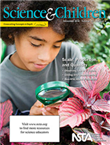 Young children work at macroscopic scales that are directly observable and move on to those that are too small, too large, too fast, or too slow to observe as they learn.
Young children work at macroscopic scales that are directly observable and move on to those that are too small, too large, too fast, or too slow to observe as they learn.
Featured articles (please note, only those marked “free” are available to nonmembers without a fee):
- Bee-Wild About Pollinators!
- Cinderella Separates a Mixture
- Free – Editor’s Note: Scale, Proportion, and Quantity
- Gliding Into Understanding
- Free – Observing Life in a Square
- Shrieks and Shrills
- Full Table of Contents
Science Scope
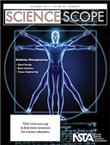 Ebola, vaccinations, and concussions are just some of the health issues making headlines recently. In this issue, we explore health-related topics that are sure to engage students and reinforce the notion that the body is a system of multiple interacting subsystems.
Ebola, vaccinations, and concussions are just some of the health issues making headlines recently. In this issue, we explore health-related topics that are sure to engage students and reinforce the notion that the body is a system of multiple interacting subsystems.
Featured articles (please note, only those marked “free” are available to nonmembers without a fee):
- Inspired by Real Science: Biomedical Engineering for Breast Cancer Research in the Classroom
- Free – No Ordinary Coronary
- Sickle Cell Disease: Relating Community Health and Heredity
- The Big Break: A Module on Biomedical Engineering Principles and Medical Devices
- Full Table of Contents
The Science Teacher
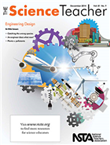 Engineering has a rich history that goes back at least as far as the ancient metallurgists who transported humanity out of the Stone Age. Twentieth-century engineers gave us everything from radar and television to lunar landings and the internet; the Human Genome Project that radically transformed the life sciences; and improvements in health, sanitation, and medicine that led to a 30-year increase in life expectancy, which surely ranks as one of society’s greatest achievements. By incorporating engineering design and technology into our classrooms, we allow students to apply their developing science understanding to solving problems that are practical, relevant, and important in their daily lives. All of the feature articles in this issue address this important effort.
Engineering has a rich history that goes back at least as far as the ancient metallurgists who transported humanity out of the Stone Age. Twentieth-century engineers gave us everything from radar and television to lunar landings and the internet; the Human Genome Project that radically transformed the life sciences; and improvements in health, sanitation, and medicine that led to a 30-year increase in life expectancy, which surely ranks as one of society’s greatest achievements. By incorporating engineering design and technology into our classrooms, we allow students to apply their developing science understanding to solving problems that are practical, relevant, and important in their daily lives. All of the feature articles in this issue address this important effort.
Featured articles (please note, only those marked “free” are available to nonmembers without a fee):
- An Engineer Does What Now?
- Free – Catching the Wrong Species
- Free – Editor’s Corner: Engineering a New World
- Engineering Design Challenge
- Make Room for Engineering
- Plants v. Pollutants
- Full Table of Contents
Get these journals in your mailbox as well as your inbox—become an NSTA member!
The mission of NSTA is to promote excellence and innovation in science teaching and learning for all.
Follow NSTA
| |
|
|
|
The titles of this month’s journal articles from the National Science Teachers Association (NSTA) are so fun, you may just feel like you’re getting an early holiday present when you read them: “Elephant Trunks and Dolphin Tails,” “Cinderella Separates a Mixture,” “Not Too Hot, Not Too Cold,” and “An Engineer Does What Now?” But these lighthearted titles represent very serious teaching strategies and lesson plans.
The way it's supposed to be…
By Mary Bigelow
Posted on 2014-12-10
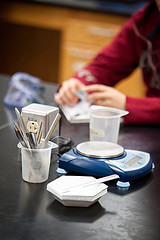 I have been trying to incorporate more inquiry-based investigations into my biology curriculum. But the students are upset. They want to stick with the cookbook labs where they follow the procedure and complete a data table that I give them.
I have been trying to incorporate more inquiry-based investigations into my biology curriculum. But the students are upset. They want to stick with the cookbook labs where they follow the procedure and complete a data table that I give them.
—T., Colorado
It seems like you’ve noticed how high school students (and some of their parents) have definite ideas of how schools and classes should operate. If you deviate, you get pushback that can range from dirty looks to complaints to outright defiance. Even what may appear to be small changes such as an updated cafeteria menu, a different bell schedule, or a new classroom routine can set off this pushback.
If we try a new strategy once and it doesn’t fit the modus operandi, the students may assume that if they fuss or refuse, we’ll say “Well, that didn’t work” and classroom life will return to the-way-things-are-supposed-to-be. This certainly happened to me when I tried a different instructional strategy, an alternative form of assessment, or a new classroom management routine. Students would roll their eyes or complain before we even started.
We are such creatures of habit! By the time students are in the upper elementary grades, they have a definite idea of what school is “supposed to be.” Whenever teachers or administrators deviate from this comfort zone, the defenses go up.
This is true in other subject areas, too. I read an article about a French IV teacher who wanted to focus on conversations and authentic activities (all in French) instead of the traditional emphasis on grammar and vocabulary. Sounds good, right? But her students (mostly seniors) were outraged. She had changed the rules! These students were taking AP and other advanced level courses, and they saw the traditional French class as an easy A while they concentrated on their “real” courses. They knew they were good at memorizing and test-taking, but this conversation thing was a challenge that would require a different kind of effort.
The literature has discussions of how “inquiry” is actually a continuum of students assuming more responsibility for their investigations. In all fairness to the students, it might be overwhelming for them to leap from the comfort zone of cookbook labs to full inquiry in which they are assigned to formulate a question, design the procedure, and conduct the investigation. How have you approached this transition? If this is uncharted territory for the students, they will need to see examples of researchable questions, develop a repertoire of lab skills, and learn appropriate ways to organize and display their data. This is where you use your skills as a teacher to model and provide feedback. (See the blog From Cookbook to Inquiry for a description of an inquiry continuum and a link to an NSTA resource collection on the topic.)
Your question also made me think about how will students adapt to the performance expectations of the Next Generation Science Standards (NGSS). How will they apply the core ideas, make connections with the cross-cutting concepts, and incorporate scientific practices? If the NGSS performance expectations are drastically different from activities and assessments in their current science classes, what can we do to help students adapt to the changes, as we adapt to them ourselves?
If we know something is the right thing to do, a research base is behind it, and it will ultimately pay off in better learning or a better classroom environment, we should stick with it and explain why we are doing something new or different. The task should be divided into manageable steps. We may need to model the activity or strategy frequently. We need to give students time to adapt, keep at it, and continue to provide guidance, support, and encouragement as they move through the inquiry continuum. When students see the value, what was once a new idea becomes part of the-way-things-are-supposed-to-be.
STEM workers in the trades
By Peggy Ashbrook
Posted on 2014-12-09
 On OPB radio’s Think Out Loud interview segment, “Examining The Shortage Of Craft Workers In Oregon,” Dave Miller interviews trade industry experts.
On OPB radio’s Think Out Loud interview segment, “Examining The Shortage Of Craft Workers In Oregon,” Dave Miller interviews trade industry experts.
Listen to Connie Ashbrook, Executive Director of Oregon Tradeswomen, Inc., talk about construction and manufacturing apprenticeship programs, referencing a Brookings Institute report, “The Hidden STEM Economy,” about STEM careers that do not require a four-year college degree. Ashbrook says the lack of knowledge of blue collar professions, including the trades, is keeping young people from pursuing jobs such as Auto Techs and Mechanics, Carpenters, Plumbers, Registered Nurses and Welders, which are incredibly important to our economy.
Other guests are Steve Malany, President of the board of directors at the Associated General Contractors Oregon-Columbia Chapter, and Tia Vonil (pictured above), Graduate of the Oregon Tradeswomen’s Pathways To Success Program and a third-year union electrical apprentice in Portland.
In early childhood classrooms we often learn about “community helpers” such as firefighters and doctors. Let’s make sure we include workers such as plumbers too.
Full disclosure: I am proud to be Connie’s sister!
 On OPB radio’s Think Out Loud interview segment, “Examining The Shortage Of Craft Workers In Oregon,” Dave Miller interviews trade indu
On OPB radio’s Think Out Loud interview segment, “Examining The Shortage Of Craft Workers In Oregon,” Dave Miller interviews trade indu
#NSTA14 Long Beach Stories
By Lauren Jonas, NSTA Assistant Executive Director
Posted on 2014-12-09
 Our recent NSTA conference on science education in Long Beach, CA, was held in collaboration with the California Science Teachers Association (CSTA). How fitting that one of the largest area conferences we’ve ever had was the result of amazing collaboration, because it all really does comes down people—and last week we gathered with an incredibly enthusiastic, smart group. The ideas bubbled up, networks were forged or enforced, and teachers found themselves re-invigorated. For a visual snapshot of the conference, check out our Storify curation of #NSTA14 Long Beach.
Our recent NSTA conference on science education in Long Beach, CA, was held in collaboration with the California Science Teachers Association (CSTA). How fitting that one of the largest area conferences we’ve ever had was the result of amazing collaboration, because it all really does comes down people—and last week we gathered with an incredibly enthusiastic, smart group. The ideas bubbled up, networks were forged or enforced, and teachers found themselves re-invigorated. For a visual snapshot of the conference, check out our Storify curation of #NSTA14 Long Beach.
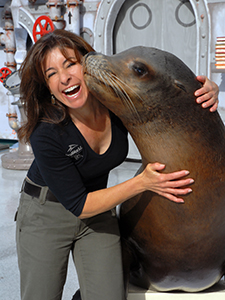 The conference kicked off with featured speaker Julie Scardina (of SeaWorld and Busch Gardens: San Diego, CA), who used animal ambassadors to demonstrate that it takes a more sophisticated understanding of ecology, biology, and environmental science to save our planet’s biodiversity. NSTA President Juliana Texley echoed the conference theme (“catch the wave”) as she introduced Scardini, telling the crowd that “A tsunami begins with hidden energy. As it travels across the ocean, it is barely noticeable (only a centimeter or two of wave). But when it hits the shore, it explodes with energy.
The conference kicked off with featured speaker Julie Scardina (of SeaWorld and Busch Gardens: San Diego, CA), who used animal ambassadors to demonstrate that it takes a more sophisticated understanding of ecology, biology, and environmental science to save our planet’s biodiversity. NSTA President Juliana Texley echoed the conference theme (“catch the wave”) as she introduced Scardini, telling the crowd that “A tsunami begins with hidden energy. As it travels across the ocean, it is barely noticeable (only a centimeter or two of wave). But when it hits the shore, it explodes with energy.  An analogy for the wave of science education reform that is rumbling through our profession and will create explosive change in student achievement and empowerment.” CSTA President Laura Henriques set the tone for the conference as she met Piper the tarantula—although the penguins ended up being the crowd’s favorite animals, Henriques embraced the idea of fearlessly learning and facing the future!
An analogy for the wave of science education reform that is rumbling through our profession and will create explosive change in student achievement and empowerment.” CSTA President Laura Henriques set the tone for the conference as she met Piper the tarantula—although the penguins ended up being the crowd’s favorite animals, Henriques embraced the idea of fearlessly learning and facing the future!
 STEM classrooms, Next Generation Science Standards (NGSS) implementation, and science as the gateway to the Common Core State Standards (CCSS) were the focus of the conference strands, but sessions focused on everything from forensic science to analyzing live ocean data to reading strategies. We loved hearing from attendees about how much they learned and what they’ll take back to the classroom! We’re not the only ones who were feeling the science teacher love… and we’re going to hold Ariel Zych to her promise to bring a cardboard Ira next time.
STEM classrooms, Next Generation Science Standards (NGSS) implementation, and science as the gateway to the Common Core State Standards (CCSS) were the focus of the conference strands, but sessions focused on everything from forensic science to analyzing live ocean data to reading strategies. We loved hearing from attendees about how much they learned and what they’ll take back to the classroom! We’re not the only ones who were feeling the science teacher love… and we’re going to hold Ariel Zych to her promise to bring a cardboard Ira next time.
 If you were there and have more to tell us, we encourage you to evaluate your sessions and track your professional development certification (based on clock hours). To evaluate a session, attendees should follow these steps:
If you were there and have more to tell us, we encourage you to evaluate your sessions and track your professional development certification (based on clock hours). To evaluate a session, attendees should follow these steps:
- Visit the conference session browser and search for part of the session title or presenter’s name using the Find Keyword search option.
- Once you find the session you wish to evaluate, simply click the Evaluation Session button.
- Enter badge number (if you don’t remember your badge number, click “help me find my badge number”).
- When finished evaluating the session, click the “Submit Evaluation” button.
- Repeat this process for each session attended.
But it was not all work and no play. One of the funner aspects of the conference was the photo booth in the NSTA membership area in the exhibit hall. Browse the images here. Throughout the entire conference, NSTA fans (NSTA Groupies) shared their photos with us as well, and you can check them out at the #NSTAGroupie Storify.
 The conference was so packed that many attendees told us they couldn’t get to all sessions they wanted to, so we closed out the week with a special round of encore sessions on Saturday. Many thanks to the gracious presenters who stayed to make those happen.
The conference was so packed that many attendees told us they couldn’t get to all sessions they wanted to, so we closed out the week with a special round of encore sessions on Saturday. Many thanks to the gracious presenters who stayed to make those happen.
 And now we can’t wait to do it again in Chicago in March! Strands at the 2015 NSTA National Conference on Science Education will focus on Natural Resources, Natural Partnerships;Teaching Every Child by Embracing Diversity;The Science of Design: Structure and Function; and Student Learning—How Do We Know What They Know? Please join us in Chicago, March 12–15, 2015!
And now we can’t wait to do it again in Chicago in March! Strands at the 2015 NSTA National Conference on Science Education will focus on Natural Resources, Natural Partnerships;Teaching Every Child by Embracing Diversity;The Science of Design: Structure and Function; and Student Learning—How Do We Know What They Know? Please join us in Chicago, March 12–15, 2015!
The mission of NSTA is to promote excellence and innovation in science teaching and learning for all.
Follow NSTA
| |
|
|
|
 Our recent NSTA conference on science education in Long Beach, CA, was held in collaboration with the California Science Teachers Association (CSTA).
Our recent NSTA conference on science education in Long Beach, CA, was held in collaboration with the California Science Teachers Association (CSTA).
Elementary science connections
By Mary Bigelow
Posted on 2014-12-07
 Help! At my school, science is a special that my first graders go to once a week. I’m looking for integrated and engaging ideas for science that I could use during regular instruction. As most teachers know, time is precious, but I think it’s vital to pique students’ interests now while they are still curious and excited about science.
Help! At my school, science is a special that my first graders go to once a week. I’m looking for integrated and engaging ideas for science that I could use during regular instruction. As most teachers know, time is precious, but I think it’s vital to pique students’ interests now while they are still curious and excited about science.
—A., Texas
As I observe elementary classes and read the Science & Children journal, I’m excited to see how enthusiastic and energetic the students are when provided with challenging investigations with guidance and support from the teacher.
Actually, you and your students are fortunate that they have a dedicated science class each week. In many elementary schools, science (and social studies) in the lower grades is put on a back burner while instructional time is spent on math and reading (the tested subjects). And in some schools, science and social studies never even make it to the back burner until the spring testing season is over.
It’s easy to suggest that elementary teachers design interdisciplinary lessons that incorporate math, reading, and science. The fact is that in some schools, math and reading curricula are prescribed and teachers are expected to follow a script. So there’s not much wiggle room to bring in science and social studies concepts. Designing meaningful interdisciplinary lessons that go beyond superficial connections can be a daunting task. Collaborating with your peers on such lessons can be a powerful form of professional development. Could your school provide any time or resources for these collaborations?
Informally, you could consider these for your classroom:
- A collection of science-related books available for instruction, independent reading, or picture-looking.
- Learning centers with a science theme and objects for students to explore (such as bones, shells, or rocks), materials they can manipulate and build things with, or a classroom garden or aquarium.
- Incorporating science practices into math activities, including measuring and graphing.
- Read-alouds or book talks using science books or biographies of scientists.
But it sounds like you want to go beyond an informal approach to something more planned and purposeful. I realize that the special is probably your planning period for the day, but perhaps you could sit in on a class or two to get an idea of the kinds of things your students do in science.
I would definitely talk with the science specialist/teacher who meets with your students. Find out what topics are being studied (and when) so that you can reinforce or extend them in a timely manner. Ask about the activities your students do and whether they can continue them in the classroom. They probably come back from science all excited, and they’ll be equally excited to do more. For example, if the science topic is plant growth, then your some of your readings and activities could focus that topic (plants, gardens, farming, and so on). I suspect that the science teacher is also frustrated by the constraints of a once-per-week schedule, and I would hope that your colleague would be excited to have you supplement the science activities. He or she may also have suggestions for related interdisciplinary activities and resources to share with your classroom. This could be the start of a great opportunity for your students and a productive collaboration between you and the specialist.
Each month, NSTA’s Science & Children has several features that you might find useful:
- Teaching with Trade Books explores a concept with recommended books and investigations. For example, the November 2014 topic is What Goes Up Must Come Down. The article lists two books (K-2 and 3-5), connections with the Next Generation Science Standards (NGSS), and two lessons in 5E format related to the books.
- The Early Years features easy-to-use ideas for developing student interest and curiosity. The November 2014 theme is Cause and Effect: Where’s the Evidence?
- Featured articles related to the monthly theme include lesson plans, connections to NGSS, and related materials. NSTA members have access to both current and previous issues.
I applaud your desire to tap into students’ interests to help them build a foundation for further learning.
Photo: http://www.flickr.com/photos/benwerd/329570851/
 Help! At my school, science is a special that my first graders go to once a week. I’m looking for integrated and engaging ideas for science that I could use during regular instruction. As most teachers know, time is precious, but I think it’s vital to pique students’ interests now while they are still curious and excited about science.
Help! At my school, science is a special that my first graders go to once a week. I’m looking for integrated and engaging ideas for science that I could use during regular instruction. As most teachers know, time is precious, but I think it’s vital to pique students’ interests now while they are still curious and excited about science.
—A., Texas
What will happen if I…. Preparing an effective learning environment with help from Peep
By Peggy Ashbrook
Posted on 2014-12-05
 I see it all the time, children wondering what will happen if I….push on this ball, let go of this ball, put this ball in water, or throw this ball? What will happen if I…touch the paper gently with the paintbrush, shake the paint brush, put the brush all the way into the paint or put the brush into a different color? And what will happen if I blow into my straw, if I crush a strawberry in my hand or if I mix my food together?
I see it all the time, children wondering what will happen if I….push on this ball, let go of this ball, put this ball in water, or throw this ball? What will happen if I…touch the paper gently with the paintbrush, shake the paint brush, put the brush all the way into the paint or put the brush into a different color? And what will happen if I blow into my straw, if I crush a strawberry in my hand or if I mix my food together?
Causing something to happen is a goal of many early childhood investigations. An interesting environment provides many opportunities for children to wonder and act. As children investigate, we can support them. Follow along with blogger Denita Dinger on Play Counts! as she prepares the environment to invite exploration.
Following up on these open-ended investigations with conversations, discussions and revisiting the action can help children think more about what they did, what they thought would happen, what did happen and about any relationships involved.
 The Thinking BIG Learning BIG Facebook page by the author of Thinking Big Learning Big, Marie Faust Evitt, is a great source of inspiration for activities where children explore “what if’s.” In the November 2014 issue of Science and Children I wrote about Cause and Effect, one of the Crosscutting Concepts that support the Next Generation Science Standards (K-12) (NGSS) and an activity involving slightly inclined tabletops and balls. Setting up a table (without the children seeing me) so one end is lower gave children a puzzling situation to discuss and look for answers—the balls that were simply placed on the table began to move “all by themselves,” without being pushed! The children proposed relationships between the event (ball rolling “by itself”) and its cause. As they wondered about the cause, they thought of trying the balls on different tables to see if the same relationship exists.
The Thinking BIG Learning BIG Facebook page by the author of Thinking Big Learning Big, Marie Faust Evitt, is a great source of inspiration for activities where children explore “what if’s.” In the November 2014 issue of Science and Children I wrote about Cause and Effect, one of the Crosscutting Concepts that support the Next Generation Science Standards (K-12) (NGSS) and an activity involving slightly inclined tabletops and balls. Setting up a table (without the children seeing me) so one end is lower gave children a puzzling situation to discuss and look for answers—the balls that were simply placed on the table began to move “all by themselves,” without being pushed! The children proposed relationships between the event (ball rolling “by itself”) and its cause. As they wondered about the cause, they thought of trying the balls on different tables to see if the same relationship exists.
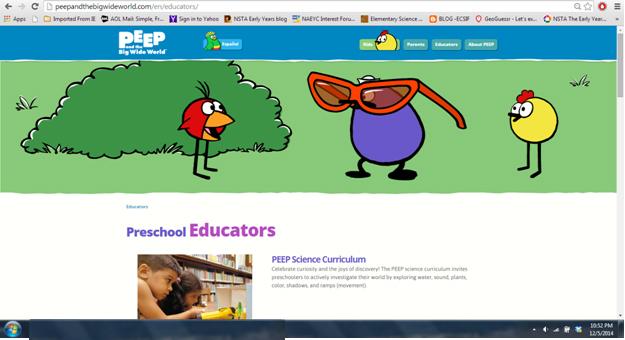 On the Peep and the Big Wide World website, a video clip taken in a family child care shows children investigating how different inclined plane (ramp) surfaces affect the movement of objects. Peep and the Big Wide World is an animated television series and a website with really good professional development resources for early childhood educators, guided by the Science Adviser, Karen Worth. The video clips on the topics of Science Talk, Learning Environments, Individualized Instruction, and Documentation and Reflection are my favorite part of the extensive library that includes curriculum on the topics of color, plants, ramps, shadows, sound, and water. A Self-Guided training handout and Facilitator’s Guide and PowerPoint slides generously show how to deepen one’s own and other’s understanding of the strategies in the curriculum units.
On the Peep and the Big Wide World website, a video clip taken in a family child care shows children investigating how different inclined plane (ramp) surfaces affect the movement of objects. Peep and the Big Wide World is an animated television series and a website with really good professional development resources for early childhood educators, guided by the Science Adviser, Karen Worth. The video clips on the topics of Science Talk, Learning Environments, Individualized Instruction, and Documentation and Reflection are my favorite part of the extensive library that includes curriculum on the topics of color, plants, ramps, shadows, sound, and water. A Self-Guided training handout and Facilitator’s Guide and PowerPoint slides generously show how to deepen one’s own and other’s understanding of the strategies in the curriculum units.
Using these kinds of resources helps me create effective learning environments that encourage science exploration.
 I see it all the time, children wondering what will happen if I….push on this ball, let go of this ball, put this ball in water, or throw this ball? What will happen if I…touch the paper gently with the paintbrush, shake the paint brush, put the brush all the way into the paint or put the brush into a different color?
I see it all the time, children wondering what will happen if I….push on this ball, let go of this ball, put this ball in water, or throw this ball? What will happen if I…touch the paper gently with the paintbrush, shake the paint brush, put the brush all the way into the paint or put the brush into a different color?
I Have Little Access to Professional Learning Programs Where I Live. Where Can I Turn to for Help?
By Carole Hayward
Posted on 2014-12-04
Sandy Gady has been an NSTA member for over 22 years. Her first teaching jobs were in small towns with no colleges or universities nearby. Therefore, Gady says that access to quality professional learning was limited, which is why her NSTA membership really came in handy. “When I was in a small town with no access to professional learning, the NSTA journals saved me,” she says. Gady credits her NSTA membership with helping her achieve National Board Certification. “Being a part of NSTA helped me figure out what is a big idea, how you break it down, and how you teach science in a meaningful way,” she says.
And, even though Gady now lives and works in an area with greater professional learning opportunities, she says she uses her NSTA membership just as much, especially in her role as an NSTA online advisor.
Gady: So many teachers here in Washington State live in rural communities and there is no other way to get better professional learning. I find that the NSTA web seminars are better than almost any class offered at a college or university. For instance, the American Chemical Society (ACS) and NSTA hosted a web seminar on candy and chemistry in September. I couldn’t pull away from it, it was so engaging. And the Next Generation Science Standards (NGSS) seminars have been terrific. I would say having access to the web seminars and the journals has allowed me to understand the science behind what I teach.
NSTA is kind of my backbone. When you take part in the NSTA Community Forums, you have access to the most fantastic people in the world when you’re trying to figure out what you want to do next with your teaching to take it to another level. When you say, ‘I need help and I have this idea, does anybody know of anything else I can do?’ you get valuable feedback from fellow teachers within 24 hours.
I’ve had student teachers in the last three years who haven’t heard about NSTA. I’ve told them about the association and all of the resources available to them. NSTA offers Student, Preservice, and New Teacher memberships, and does everything it can to make learning accessible to teachers. Now, many of my student teachers are using the NSTA Learning Center as part of the classes they’re teaching.
How else does your NSTA membership help you?
Gady: The NSTA Conferences are amazing. When you are from a small town and you walk into a regional conference, you are just blown away with the wide variety of resources that you didn’t even know existed. Having the vendors all in one place and being able to see what’s possible is a terrific opportunity that without NSTA wouldn’t exist.
In addition, any book that is published by NSTA Press is a quality book. For me, it really all goes back to professional learning. When I first stepped into a science classroom, I had a half-credit of science in my K–8 endorsement. Science education wasn’t deemed important in our state at that time. Therefore, I relied heavily on NSTA books for support. I still live by Bill Robertson’s The Stop Faking It series and Page Keeley’s Uncovering Student Ideas in Science. I have three sets of both series. One set I keep at school, one I keep at home, and one I loan to the National Board candidates I facilitate.
I am also really impressed with NSTA’s virtual conferences. NSTA doesn’t get old; it never ages. NSTA has always had a vision ahead of where everyone else is. There is no price you can put on that.
(Note from NSTA: Not a member of NSTA? Learn more about how to join.)
Jennifer Henderson is our guest blogger for this series. Before launching her freelance career as a writer/editor, Jennifer was Managing Editor of The Science Teacher, NSTA’s peer-reviewed journal for high school science teachers.



